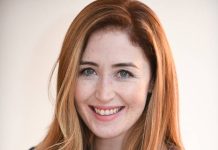The combined October Surprises of poor market volatility, adverse tax inversion rulings and overall portfolio plummets have led one veteran hedge fund manager to call it quits. The San Francisco-based firm founded in 1995 managed assets of about $1 billion, but despite a long and storied history of success, this past years performance woes especially Octobers — were too unacceptable to the firms founder for him to continue. As it is the largest hedge fund to close this year, some observers wonder whether this is a harbinger of things to come.
Second Shutdown in Eight Years
The firm boasted returns of 29 percent during its first 11 years in business; however, being cautious of the possible bursting of 2006s credit bubble, the manager returned outside capital to investors that year. Two years later, anticipating a new and improved financial environment in the aftermath of the 2008 crash, the firm reopened as an activist hedge fund specializing in energy, the exploitation of leveraged capital structure and distressed investing.
A Bittersweet Closing
In a November 10 letter to investors, the founder lamented the closing of the firm as bittersweet and noted that the hardest part about closing his company was his inability to claim the very highest ground of perennial outperformance. As of Oct. 31, returns were down about 2.4 percent for the year.
Significant Factors Cited
Two of the funds major positions were adversely affected by the U.S. Treasury Departments about-face limiting tax inversion deals. However, according to the Wall Street Journal, it was the qualitative easing monetary policy implemented by the Bank of Japan in October in order to stimulate the Japanese economy that put the final nail in the firms coffin.
Research Trend Noted
According to the HFR hedge fund research organization, 904 hedge funds were liquidated in 2013 a three-year high while the slightly more than 1,000 new funds that were launched that year constituted the lowest level since 2010. Whether last years figures coupled with significant players closing up shop in 2014 constitute a trend remains to be seen.
Converting to a Family Office
As happened with SAC and other well-known once-public funds, the firm is not totally liquidating but rather converting to a family fund that will continue to manage the founders private wealth. A significant portion of its limited partners capital account will be distributed by the end of the year followed by further distributions during the first half of 2015. All outside capital distributions are targeted no later than June 30, 2015. Notwithstanding such moves, the founder has not ruled out accepting investor funds at some point in the future.
David draws on 20+ years’ experience in both legal practice and in business services delivery since his own call to the Bar in 1989. With several years in the startup environment, including as a co-founder in the legal tech space specifically, he brings a unique and timely perspective on the role of data, automation and artificial intelligence in the modern and efficient delivery of services for legal consumers. Having been both a corporate buyer of legal services and a services provider, he identifies the greater efficiency and value that can be achieved in legal operations for corporate buyers especially.
An attorney, David worked for law firms Pinsent Masons and Linklaters in London before moving to New York to join Credit Suisse. As CAO, he helped negotiate & execute the relocation of Credit Suisse into its new NYC global HQ. Subsequently, David directed major global outsourcing, shared sourcing, HR operations & process efficiency initiatives including the digitization of records, the global roll-out of PeopleSoft HRMS & Y2K. David has worked extensively in the UK, US, Philippines, India and China markets in the areas of data management, human resources and business process outsourcing.
Most recently, David has been successfully investing in and serving as an advisory board member of several legal services start-ups including a cloud-based solution for legal process automation and e-filing; and a technology solution for large-scale capture of court and other public data used for litigation analysis, among others.
David graduated from the University of Manchester with Honors in Law and Bar School (College of Legal Education) in London, and has been a member of Middle Temple since 1989. He is the founder and former Chairman of The Global Sourcing Council.
Member: Bar of England & Wales, ABA, NYCBA, ACC, DRI












































